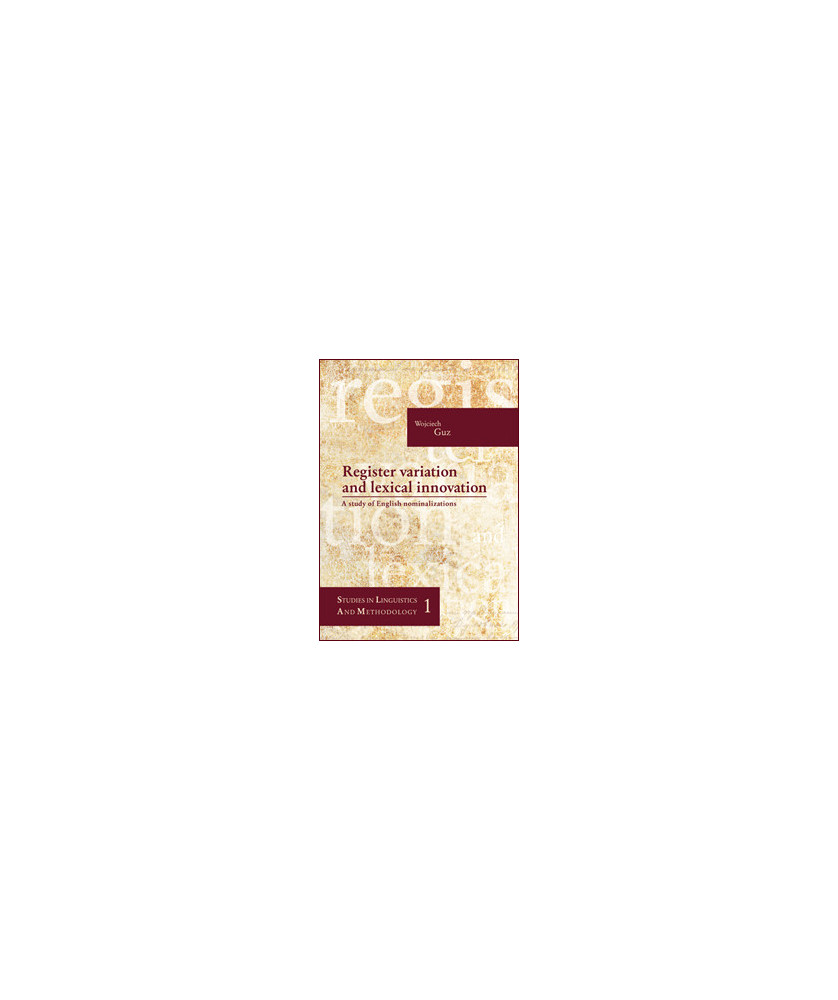


Studies in Linguistics And Methodology. Vol. 1
Wojciech Guz
ISBN: 978-83-7702-117-0
Stron: 220
Format: B5
Rok wydania: 2010
Contents
List of Figures
List of Tables
Introduction
Chapter 1: Lexical innovations: neologisms and nonce words
1. Introduction
2. Nonce formation
2.1. Formal structure: complex and simplex words
2.2. Productivity vs. creativity
2.2.1. Introduction
2.2.2. Exemplification
2.2.3. Summary and conclusion
2.3. Intentionality vs. unintentionality
2.4. Other characteristics proposed in the literature
2.4.1. Hohenhaus's (1998) scalar definition
2.4.2. Context-dependence and non-lexicalizability
2.4.3. Evaluation
2.5. Definition of nonce-formation revisited
2.6. Conclusion
3. Neologism
3.1. Disambiguating the term neologism
3.2. Institutionalization
3.2.1. Neologisms as part of the community-dependent norm
3.2.2. Factors conditioning the chances of institutionalization
3.2.3. Indicators of advanced/complete institutionalization
3.3. Degrees of lexical currency
3.4. The 'nonce-word - neologism - institutionalized word' cline
3.5. The lexicographical approach: criteria for entry
4. Conclusion: nonce-words and neologisms
Chapter 2: Language corpora and corpus linguistics
1. What is a corpus?
1.1. Corpus issues: authenticity
1.2. Corpus issues: representativeness, sampling, corpus and sample size
2 Historical perspective
3 The corpus approach - characteristics, advantages and applications
Chapter 3: Linguistic variability and register variation
1. Introduction
2. Linguistic variation
3. Sociolinguistics
4. Variationist sociolinguistics
4.1. Orderly heterogeneity
4.2. Variable rules
5. Register and register variation
6. Multi-dimensional analysis of register variation: Biber (1988)
7. English nominalizations in Biber (1988)
Chapter 4: A register-sensitive study of English nominalizations
1. Introduction
2. Aims and research questions
3. Methodology
3.1. The BNC genres and super-genres
3.2. Mark Davies's online BNC interface
3.3. The data
3.4 Procedure
4. Results and discussion
4.1. Register variation among -ness, -ity, -ion and -ment nominalizations
4.2 Register variation among -ance/-ence, -ship, -(c)y, -hood, -age, -dom, -ery and -al nominalizations
4.3 Considerations of morphological structure
4.3.1 Affix ordering
4.3.2 Register variation among -ness, -ity, -ion, -ment and -(c)y nominalizations: structural effects
4.4 Morphological productivity and lexical innovations
Conclusions
Appendix
References